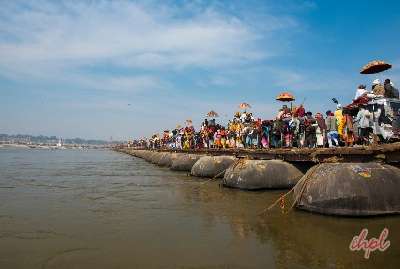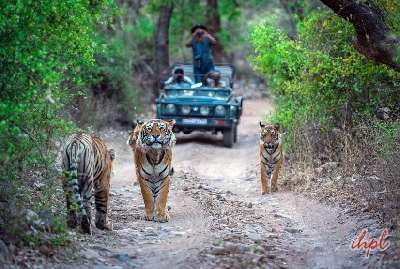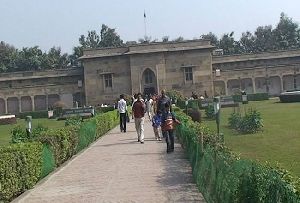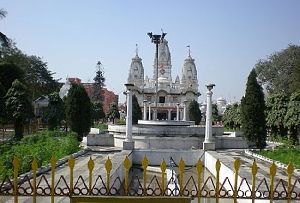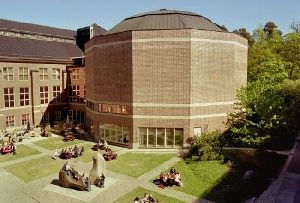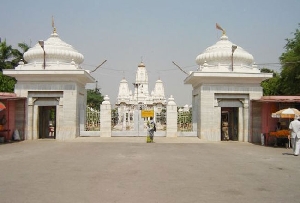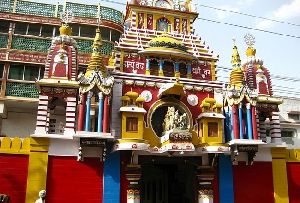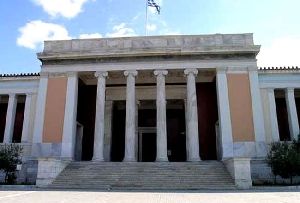The Gorakhpur district in Uttar Pradesh takes its name from the Gorakhnath Math, which was built to honor the place where Gorakhnathji practiced his austerity. There are two temples run by the Gorakhnath Math, one located South of Gorakhpur and the other in the Gorkha district in Nepal.
History of Gorakhnath Temple, Gorakhpur
The Gorakhnath Temple in Gorakhpur is named after the Guru Gorakhnath, who learned his lessons in austerities from Matsyendranath, the founder of Nath Sampradaya (monastic group). With his disciple Gorakhnath, Guru Matsyendranath founded the school of Hatha Yoga, one of the school’s most well-known and practiced schools of Yoga.
The Gorakhnath Temple is considered the most important center for Nath yogis. The temple is representative of the yoga sadhana, austerities, and enlightenment of Guru Gorakhnath. It is believed that the Samadhi shrine and gaddi of Gorakhnath Ji are located inside this famous and popular temple in Gorakhpur. The temple has a significant following in eastern Uttar Pradesh, the terai region, and Nepal.
Gorakhpur Temple Legend
One of the famous legends associated with this temple and Guru Gorakhnath is that devotees chanting Gorakhnath Chalisa 12 times are blessed with the Divya Jyoti or the miraculous flame.
In the records of the temple, it is revealed that the Gorakhpur Gorakhnath Temple structure and shape were transformed over a period of time. Many attempts were made to destroy this temple during the rule of the Sultanate and Mughal era. First, Alaudin Khilji destroyed the Gorakhnath temple in the 14th century, and later it was damaged by yet another devout Islamic ruler of India, Aurangzeb, in the 18th century.
Even though the structure was destroyed twice, the place still holds its sanctity, significance, and pious aura. The form and shape in which this temple is seen today are said to have been conceptualized by the late Mahant Digvijaynath and the current Mahant Avedyanathji in the second half of the 19th century.
Description of Gorakhnath Temple, Gorakhpur
The Gorakhnath Temple in Gorakhpur stands on 52 acres of land. It is positioned in the city’s heart on the Gorakhpur-Sonauli state highway. This temple is an excellent example of the peeth of the Nath sect, along with Indian sculpture. The most attractive feature of this temple is the garbhagriha, where the white marble statue of sage Gorakhnath is portrayed as a manifestation of Lord Shiva in deep meditation posture.
His very sacred charan paduka has been placed close to his meditation site. Prayers are held every day in the morning and evening. The Gorakhnath Temple in Gorakhpur is visited almost every day by devotees. But every Tuesday and Saturday the number of visitors increases to a great extent.
Places of interest and things to do in Gorakhnath Temple
Gaushala (cowshed)
The Gorakhnath Temple is dedicated to the conservation and protection of cows which are considered holy and often referred to as gau mata (mother cow). Many species of cows are reared in gaushala, including Harayanwi, sahiwal, gangatiri, giri, red sindhi and other pedigree.
Akhand Jyoti
In the garbha griha (inner sanctum)of the Gorakhnath Temple, there is a flame called Akhand Jyoti (eternal flame). It is believed that the flame has been burning continuously since treat yuga, the second of the four ages of mankind. The flame is symbolic of integrity, spirituality, and oneness.
Mahabali Bhimsena Temple
In the temple precinct lies yet another significant temple belonging to Bhima. Mahabali Bhimasena was the elder brother of Dharamraj Yudhisthira, the eldest of Pandavas in Ramayana. As per the legend, when Bhimasena arrived in the temple to invite Guru Gorakhnath to attend the Rajsuya yagna, he was in Samadhi (a stage of intense concentration which is the final stage at which union with the divine is achieved). Therefore, Bhimsena had to wait for quite a while to extend the invite. Since Bhimsena was a heavyweight, it is said that a portion of the earth sank below. To commemorate the occasion, a pond was built here, which is named Bhimasarovar.
Bhim Sarovar
There is a pond called Bhim Sarovar, located east of the temple. The pond contains the holy water of all the pilgrimages in India. It is believed that this pond is also found mentioned in the stories of the Bhima of Mahabharata fame. This pond has been turned into a boating site by the temple authorities.
Durga Temple
One of the popular and pious places which the devotees throng is the Durga Mandir, located in the rear of the Gorakhnath Temple.
Khichhdi Parv (Makar Sankranti)
The festival of Makar Sankranti is celebrated with great gusto at Gorakhnath Temple every year. As per the legends, it is said that once performing austerities Guru Gorakhnath reached Jwala Devi Temple. There Jwala Devi advised him to stay and offered him prashada, but since the offering was not vegetarian, shreenathji could not accept it.
Instead, he told Jwala Devi to fire the hearth and boil some water, and in the meantime, he went out to beg for some grain to prepare khichdi (porridge). The legend states that Devi does as asked and that flame is still burning today at Jwalaji Temple, but Gorakhnathji didn’t return.
Instead, he wandered and reached Gorakhnath, where the temple currently stands. He sat down here and started meditating. The devotees prepared him a hermitage and started filling it with porridge. It was the day of Makar Sankranti. However, the hermitage never got full, and to commemorate that occasion, Makar Sankranti (Khichdi Parv) is celebrated yearly by devotees with zeal and dedication.
Khichdi Parv Dates
The Khichdi Parv is observed every year on the 14th of January when Makar Sankranti is celebrated in India.
Checkout: Agra Tour Packages, Lucknow Tour Packages, Mathura Tour Packages, Uttar Pradesh Tour Packages, Varanasi Tour Packages, Shravasti Tour Packages




